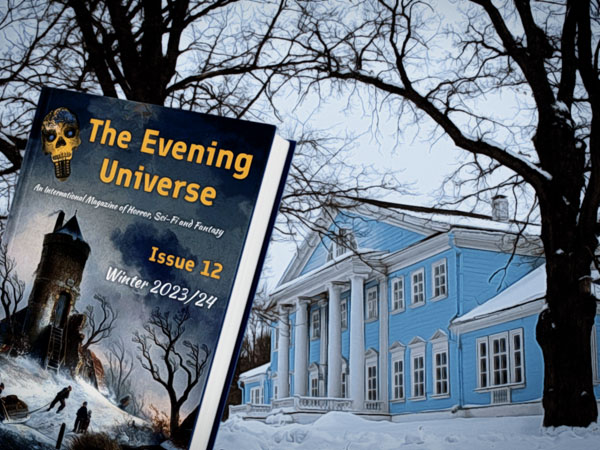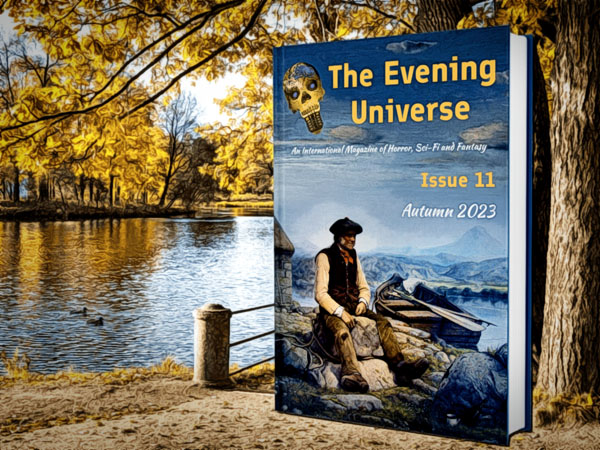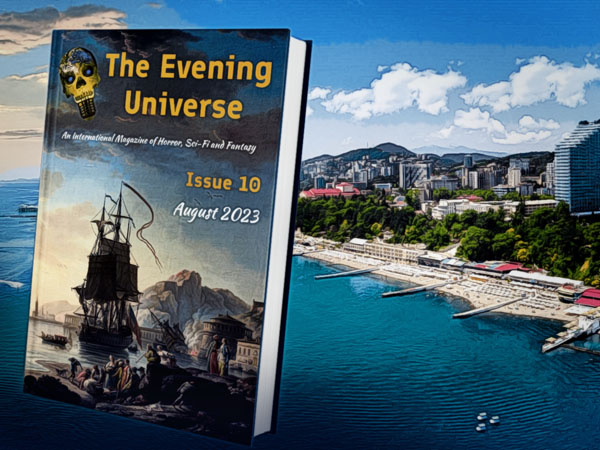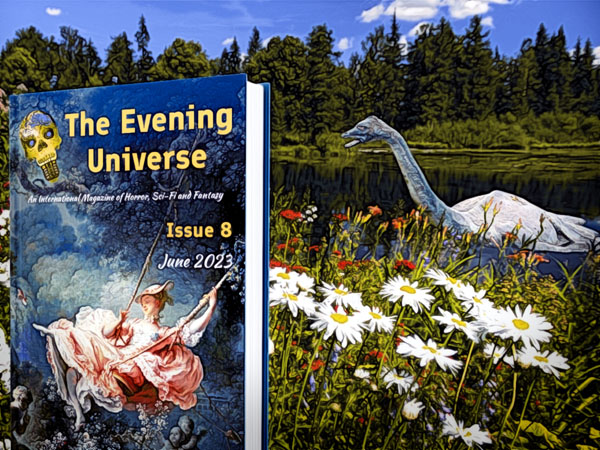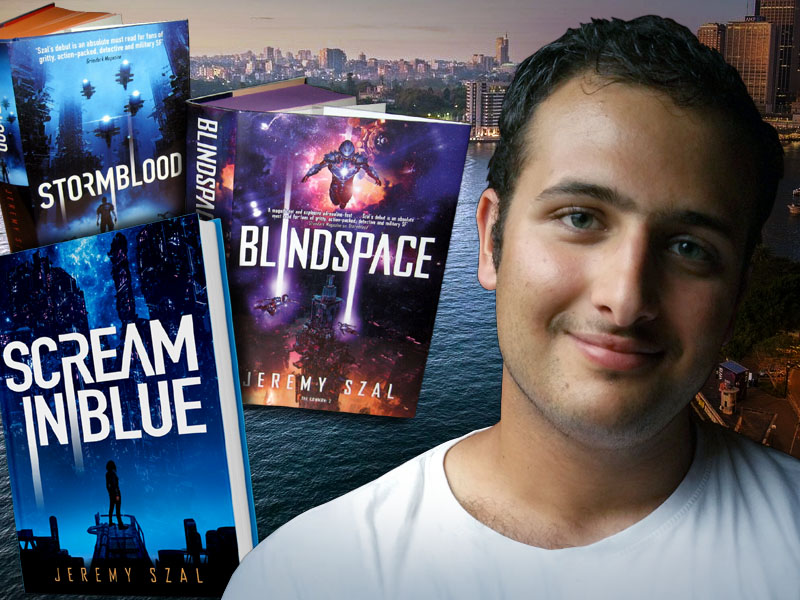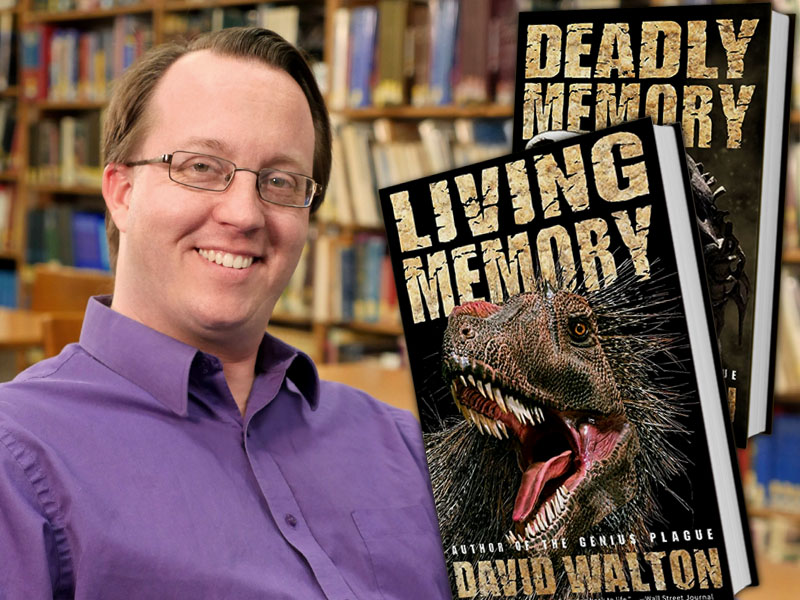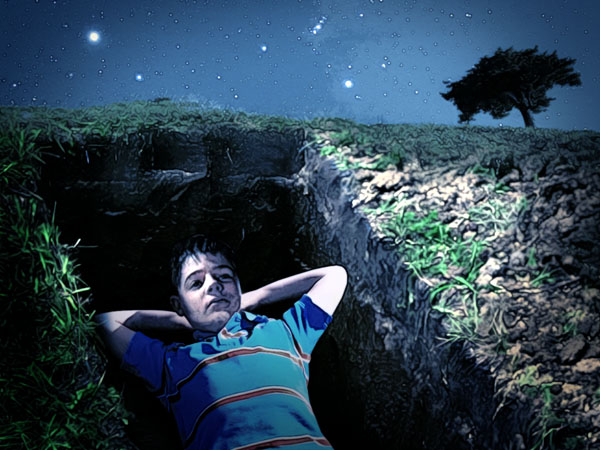
They tried to bury me alive, back in high school during my Junior Year, and it still scares the bejesus out of me when I think about it.
(Notice I didn’t take the Lord’s name in vein because no matter what everyone says, I once was an Alter Boy and actually listened to what Reverend Billingsly said when my eyes were closed. In this case, it was something like, “Though I walk through the Shadow of the Valley of Death, I shall fear no evil.”)
The northern boundary of the old cemetery started where the streetlights on Willow Road ended, because by the original covenant the graveyard and its several thousand inhabitants were exempt from taxes. So the town Commissioners voted that therefore the dead didn’t have any right to the same green Art Nuevo poles and frosted glass bulbs that illuminated residential sidewalks in neighborhoods of the living. For that matter, the cemetery didn’t have any sidewalks passing by either, even on the opposite side of the two-lane, black tarred street that led out to the city limits in a sweeping left curve. The official walkways picked up again along the Willow Lane Country Club, which abutted the south end of the dead zone, just beyond a little creek of spring water and sewage that ran under the road through a steel tube, after meandering past the back nine.
The town’s hundred-foot-tall water tower was on the country club side of the stream, and in fourth grade I climbed it, twice. I spidered up over a hundred stairs, clinging on the metal ladder trying not to look down or let go. Once I crawled on top, I spent a couple of hours laying out on the steel walkway that ran around the top, underneath the town name printed in huge letters you could read from nearly a mile away, The summer wind casually blew though my crew cut while I gazed over miles of green and golden countryside spotted with farms, and out west to the far edge of the town. I felt a surge of omnipotence and awe at the same time, felt the world was endlessly wonderful and that I would travel it one day. My name is Oswald, but they call me “Owl” because I think I’m so smart, and maybe I am. Also, I seemed to come to life as the sun set.
The night they tried to bury me alive, my friends, Jalen, Roscoe, Paddy, Corwin, Frank, and Shawnee, a girl, pointed down into the abyss and dared me. “You say you’re so damn brave, go ahead and lie down in Blake’s open grave. See how long you last.”
I laughed at them to cover my fear. Then I jumped down into the ugly cavity torn into the face of the earth, where only the dead reside. I hesitated for a moment before I lay down, fitting tightly into the cold, narrow space like it was a sealed coffin. No sooner had I stretched out, than they started shoving piles of dirt down into the tomb that the yellow machine shovel dug out that afternoon preparing for Mr. Blake’s body the next day. They surrounded the six-foot deep chasm, laughing, and chimed a final chorus, “So long buddy.”
Reddish brown soil with small pebbles showered down from all directions, onto my legs, my chest, even hitting my head, sliding into my mouth, filling my throat so I couldn’t even scream, just spit out the crud I was choking. How long would my bravado last? I defiantly lay there until the earthen film across my body was almost an inch deep, going silently insane but not moving. Then I couldn’t stand it any longer and burst up from the bottom, with damp dirt clinging to my clothes. I crawled out of Blake’s tomb screaming, “O.K., O.K. you win. I’m not ready to die yet, I want to live. It was a joke, a dumb joke.”
I kissed Shawnee to prove it and got dirt on her face. Everyone laughed for a moment and I held her hands. I could tell they were amazed I lasted that long, even though they refused to admit it. I had been buried alive and lived to tell it. But I never wanted to try it again.
“This place gives me the creeps,” Shawnee had whispered when we first walked up the main driveway of crushed gravel in the pitch dark a little before midnight. We had climbed the four-foot wrought iron fence next to the front gate and were inching our way up toward the McNary Mausoleum in the center of the sacred ground, past consecrated and unconsecrated plots where time no longer existed, whole villages, eras of people come and gone, along with their customs, their aspirations, their lost histories. We were scared out of our wits.
“Ain’t no ghosts to worry about, if that’s what you mean,” I mumbled defensively. “This way.”
I led us forward like I was some kind of explorer of the deathly night. Mr. Blake’s obituary in the school paper, The Beacon, said that final services were going to be held at the rear of the cemetery behind the McNary Mausoleum at noon the next day. Lots of the teachers and kids planned to attend. He had no family to object. Most students thought it was a good way to get out of class, at least we did. But we also thought we owed it to him.
Mr. Butterfield Blake, who we called “Butter” behind his back, had keeled over in our Fourth Period Shop class. He was sixty-three. That was right after I told him that we were naming the old Mercury, Edsel, and Chevy bumpers we were welding together, “Modern Madonna and Woke Child.” With so many churches in town, he probably thought he’d get fired or something for blasphemy. As Corwin later joked to Paddy, “I guess we gave him a heart attack to remember us by.” Of course, he didn’t say that in front of the principal or the police, who naturally suspected we were somehow involved. Jalen told them our sculpture was actually a tribute to Rayford Daniels, the school’s All-Conference fullback. Truth be told, Rayford Daniels and most of the football jocks kind of hated our guts because we liked to read strange books no teacher assigned and debate infidel ideas. Coaches warned their athletes to “stay away” from us because we were “Free Thinkers.”
Anyway, like I said, it was almost midnight on that warm May night three weeks before school let out for Summer when we creeped forward toward Butter’s open grave. We told ourselves we were going to pay our early respects, because even though he was pretty old and wore wild wide ties that we mocked, we actually liked him, when he wasn’t yelling at us. Sometimes he could be funny, and he wasn’t phony. He seemed to care about us as people, said he was worried because we were always goofing off. He was just sort of simple and kind, and we regretted that we gave him such a hard time.
Before we even got back to Butter’s final resting place, we had to walk past limestone rows of Sullivans and Smiths, Hudsons, McMillans, Earlys, Brewsters, Butlers, Jones, Visclowsky’s, Roans, Taylors, Adams, you know, a whole city of the dead dating back to the early 1800s, some of them, when Abraham Summerville Swanson built his log cabin, a day’s horse ride from the big city. Their small markers stretched out in the pitch black in all directions, and we imagined we saw little gray heads rising from their stones, yawning for moist air to take down below the grass covered soil to hold for twenty-four more hours before again rising to again to breath in the dark night, vague, gray misty faces silently hovering over their weather-beaten stones whose dates we could barely read in the dull light of a quarter moon.
A hundred yards in, Roscoe jumped and scared the hell out of us when he claimed he heard a woman’s voice behind us. Paddy didn’t seem like he was joking when he swore he detected the faint echo of a man moaning in the far section by the creek. And we all thought we heard a baby cry, three times. It gave us shivers. Our skin crawled with each movement of the wind through the old oak and sycamore leaves that branched out above us. We hesitated, wondered if we should go back, then I said, “Let’s go” and we picked up our pace. Except, Shawnee and Frankie dropped back. And we nearly flipped again when they began making hooting sounds behind us. (We called Frank “Frankiestein” because of his extra big forehead, which incidentally held a brain large enough to get him into Caltech a year later.)
I told them, “Shut the F. up.”
Back then we sort of saw ourselves as “Graveyard Poets,” like those we read about in English class. For some reason their melancholy ruminations on death fascinated us, who had just starting living self-consciously. My favorite line in those days was by Andrew Marvell, who came even earlier. “But at my back I always hear, Time’s winged chariot hurrying near.” I was a dare-devil sixteen. Anyway, those Graveyard bards, Thomas Gray, Oliver Goldsmith, Thomas Chatterton, even John Keats gave “Death” poetic rhythm and an ominous sense of sound that made us want to live dangerously.
That night there wasn’t much poetic about our adventure, we were pretty scared. To buck up our spirits, I insisted I didn’t give a damn about ghosts and stupidly announced I would even jump down into Blake’s grave when we got there to prove it. I didn’t think ahead, as usual, or imagine they would almost push me into that pit the moment we looked down into the six-foot deep chasm.
We finally reached the mausoleum at the head of the main road and rushed past it as quickly as we could because of what happened back the previous October, the last time we were out there six months earlier. That’s when an article in The Leader got everyone in town excited because it reported that Evelyn Lovett’s aunt, Marion, claimed that she and several other elderly church worthies saw a stained image of Jesus himself on the south side of the McNary Mausoleum. Marion said that it was “a miracle” that the image of Christ would seep from inside the venerable resting place of Judge McNary. She said he was deserving of the honor because he had made millions building the “Steel Mills that Built America,” or at least our little section of it, before he became a famous judge. And so a photographer was sent out and the paper printed his picture on the front page, and damn, the wet stain was, if you looked at it long enough, the spitting image of the Messiah in his long robe with arms outstretched in pity and mercy for all humankind. Crowds of sightseers followed, leaving flowers, candles, food, even cash money. We went out one afternoon and said, “Yea, maybe.” Paddy swiped a five dollar bill folded under one of the candles.
It was Corwin who said we ought to go back there that night to see if the image glowed in the dark. That would prove if it was real or not. Like the fools we were, we agreed that that was a good idea. It was a week before Halloween, on Thursday, a school night, and our parents always went to bed early weeknights to get ready for work. We met up about eleven and wow, that was something I’ll never forget. When we stiffly walked up toward the mausoleum and got fifty yards away, we were stopped cold by what we saw. We couldn’t believe it. The seven foot tall brass door in the front was open just enough for us to glimpse a dim light flickering inside.
“Christ,” Corwin swore. “Let’s beat it.”
“Shut up,” I said, not just because he was using the Lord’s name in vein and that bothered me, even though I swore lots of other oaths, but because I was scared senseless and feared that whatever was inside would hear us talking. I felt hypnotized, paralyzed, couldn’t turn to run, but couldn’t turn away either. I had to find out what the F. was going on. We crept closer, trying to get an angle to see where the light was coming from. Since I was in the lead, I was the first to catch sight of what I thought was some kind of lantern swinging back and forth inside the huge granite tomb. That gave us the shivers. Fear and curiosity battled each other in my brain, but curiosity won.
I didn’t believe in ghosts or nothing like that and figured there had to be some kind of rational explanation, like maybe the maintenance man who mowed the grass in Summer was inside dusting off the coffins or whatever, even though that didn’t make any sense since the cemetery was locked and whoever worked there had to be long gone. So I slowly led us off the gravel onto the grass and crept closer to the dark monument. Then we crabbed up the five front stairs past the concrete lions guarding the deceased. We positioned ourselves along the back side of the brass door with its elaborate religious carvings and watched the sliver of light escape the chamber through the cracked doorway, moving back and forth.
I knelt down and finally got the courage to peek around the corner, with my pals almost crawling up my back, although Shawnee stayed on the second step. I saw the light get brighter and followed it to its source. Almost at the same moment, Paddy peered over my shoulder and screamed the most blood curdling cry I ever heard outside of “Shock Theater,” the TV show we watched as kids. Corwin almost simultaneously screamed as well and slammed the door shut without even looking inside. We jumped the stairs and ran like prairie wildfire for the back fence to save ourselves. As we ran, we thought we heard a woman scream from inside. We weren’t about to stop to investigate. We jumped the fence and sprinted as fast as we could across the Junior High football field, down Elm Street, then scattered without hardly saying anything to each other, headed for our homes. We knew we’d talk about it plenty in the morning at school. We hadn’t even stopped to see if the oil-stained Jesus really glowed or not. It was miracle enough that we escaped.
When I slipped back into the bed next to my brother’s, I tried to reconstruct what I thought I saw. She was a hunched-over old lady in a black shawl swinging a amber lantern back and forth in front of several coffins sealed in the wall. Paddy insisted I was just rationalizing what I wanted to see, He swore he saw “Death” himself in a black robe and that he must have been practicing some kind of evil rites on the damned plutocrats buried inside. Not only that, he insisted that when he looked back while we were running, he saw the black veiled stalker hot on our tails, flying above the tombstones until we beat him over the cemetery’s fence where he disappeared. Maybe.
I could barely sleep and woke up sweating. My sheets were soaked. I skipped breakfast and ran a mile over to a phone booth down the street from our high school, next to Meister’s candy store and popcorn corner. He later told the cops he saw me there. I grabbed the phone book and looked up the number of the police station, put in a call. “There’s an old woman locked inside McNary Mausoleum, maybe,” I muttered in a disguised voice and hung up. And sure enough, after school we read in that afternoon’s Leader the front page story of how Judge McNary’s seventy-nine year old daughter Mariah, a respected elder at The First Faith Baptist Church, had been locked in her family tomb while she was praying for her relatives. That morning after a phone tip, the cops found her sprawled on the cold floor in shock. The paper said she was rushed to Memorial Hospital in critical condition because of her age and the trauma of thinking she was going to die buried alive.
The strange story explained that she wasn’t a witch or a crank and that because Judge McNary had originally endowed expansion of the cemetery almost a hundred years earlier, his daughter had the family key to the front gate and crypt and that she went there several nights a year on her parents’ and sister’s birthdays and anniversary of their deaths to pray for their souls. She went at night because she didn’t want fortune-hunting intruders to bother her. It also said a bunch of juvenile delinquents were suspected of locking her in and scaring her half to death and that since the tip came from a public phone near the high school, police authorities were investigating. And yes, the next morning they questioned me and Corwin along with twenty of the usual suspects when something happened at the school. We denied everything and said it was impossible for us because we were home doing our Latin homework. But they said Meister saw me in the booth before school. I explained that I was looking up the address of my girlfriend Shawnee who lived on Scott Street to send a birthday card. I’d been to her house plenty of times, but never paid attention to the address. Anyway, they couldn’t prove otherwise, and I sent her a card I drew that afternoon just in case. And that’s the main reason we stayed clear of the cemetery until Mr. Blake went and died on us, and that’s the night my friends tried to bury me alive.

